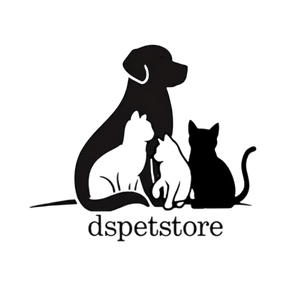2025 Pet Trends You’ll Actually Use: Simple, Smart, and Stress‑Free
Pet care in 2025 isn’t about flashy gadgets gathering dust—it’s about small upgrades that make daily life calmer, healthier, and more fun for pets and their people. Here’s a clear, creative guide to the trends that truly earn their spot in the routine.
1) Micro-Enrichment, Big Calm
Forget complicated obstacle courses. This year is all about tiny, daily tweaks that feed the senses and relax the mind.
-
Rotate two toys instead of ten to keep novelty without chaos.
-
Add a “sniff minute” before walks (scatter a few treats in grass) to dial down reactivity.
-
Create a calm corner: soft mat, dim light, one comfort item, and a predictable wind‑down cue.
Why it works: a little novelty + consistent routine = better sleep, fewer zoomies, and easier training.
2) Slow Everything: Bowls, Walks, and Routines
The fastest way to fewer tummy upsets and better behavior? Slow down.
-
Use a slow‑feeder or lick mat to reduce gulping and post‑meal burps.
-
Try “sniffari” walks—shorter distance, deeper sniffing—great for confidence and brain fatigue.
-
Keep feeding times steady; predictability soothes nervous systems.
Pro tip: spread wet food thinly on a plate if you don’t have a slow feeder.
3) Gut‑First Nutrition (Tiny Tweaks, Real Results)
No extreme diet overhauls—just supportive add‑ons and patient transitions.
-
Introduce probiotics or a gentle fiber topper for smoother stools.
-
Switch foods over 7–10 days, pausing if stools soften.
-
Keep toppers simple: one new thing at a time so cause-and-effect stays clear.
Watchlist: stool quality, gas, appetite, and itch are your best “dashboards.”
4) Sensory Design at Home
Design isn’t just pretty; it guides behavior.
-
Use non‑slip paths and soft lighting to reduce slips and nighttime anxiety.
-
Offer “choice architecture”: two beds, two water spots, one high, one quiet.
-
For cats, vertical lanes (shelves, trees), window perches, and a plant view = instant enrichment.
Easy upgrade: a textured mat near busy areas becomes a natural “settle” spot.
5) Tech That Nudges (Not Nagging)
Wearables and feeders are useful when they answer a simple question: what should change tomorrow?
-
Look for one insight per week: “more naps after morning sniff walks—keep them.”
-
Automate basics (fresh water, scheduled feeds) and spend your energy on play and training.
-
Skip data overload; set a single goal like “15% more calm time evenings.”
Rule: if a device doesn’t change a habit in 7 days, it’s not helping.
6) Eco‑Smart Without the Guilt
Sustainable choices that don’t demand perfection.
-
Choose durable toys over disposable ones; rotate to extend life.
-
Refill shampoos, buy bulk treats, repurpose towels as balance pads or snuffle mats.
-
Consider recyclable packaging or gently used gear swaps in local pet groups.
Bonus: fewer broken toys = fewer vet visits for swallowed bits.
7) Vet‑Partnered Supplements (Less Guessing, More Guidance)
This year’s real flex is personalization with professional input.
-
Target one goal—joints, skin, or gut—and trial a single, vetted supplement for 4–6 weeks.
-
Log 3 signals (mobility after walks, itch frequency, stool quality) to judge impact.
-
Avoid stacking multiple new supplements at once.
Signal to stop: no improvement after a month or new side effects—reassess with the vet.
8) Behavior First, Tools Second
Training isn’t a trend; it’s the foundation—tools only amplify good habits.
-
Teach one cue that changes your day: “settle on mat,” “drop,” or “touch.”
-
Pair grooming with tiny treats to build cooperative care (ears, paws, teeth).
-
Use management: gates, tethers, playpens—prevent chaos, then teach calm.
Win of the year: 2 minutes daily of “settle” pays off everywhere else.
9) Adventure, Micro‑Sized
Not every day can be a mountain hike—and it doesn’t need to be.
-
Try “new-place, same plan”: a different block, same sniff games.
-
For hot/cold days, indoor scavenger hunts and window “safaris” keep minds busy.
-
Pack a mini go‑kit: collapsible bowl, wipes, 2 treats, ID—confidence in a bag.
Memory > mileage: quality experiences beat long distances.
10) The 5‑Signal Weekly Check
Trends are only useful if they improve how life feels. Review these once a week:
-
Sleep/settle: falling asleep easier after activities?
-
Gut: consistent stools, less gas?
-
Skin/coat: calmer itch, better shine?
-
Mood: more play, fewer meltdowns?
-
Recovery: okay after exercise, relaxed after meals?
If two signals dip, simplify for a week: slower meals, gentler walks, less novelty.
A One‑Screen Routine for Busy Humans
-
Morning: sniff minute + short walk; measured meal in a slow feeder.
-
Midday: 5 minutes of puzzle or nose work; water refresh.
-
Evening: gentle play, then “settle on mat” with a lick mat; lights down, same time nightly.
-
Sunday: 5‑signal check, rotate one toy, wash bowls, trim nails or desensitize paws.
What to Skip in 2025
-
Overstacking supplements or toppers without tracking results.
-
Buying complex gadgets that don’t change daily habits.
-
Jamming the house with toys—rotation beats clutter.
-
Rapid food switches “cold turkey.”
Bottom Line
The best 2025 pet trends make everyday care calmer, simpler, and more personal. Start tiny, track a few signals, keep what works, and let routine do the heavy lifting. Your pet doesn’t need perfection—just steady, thoughtful care that fits real life.


